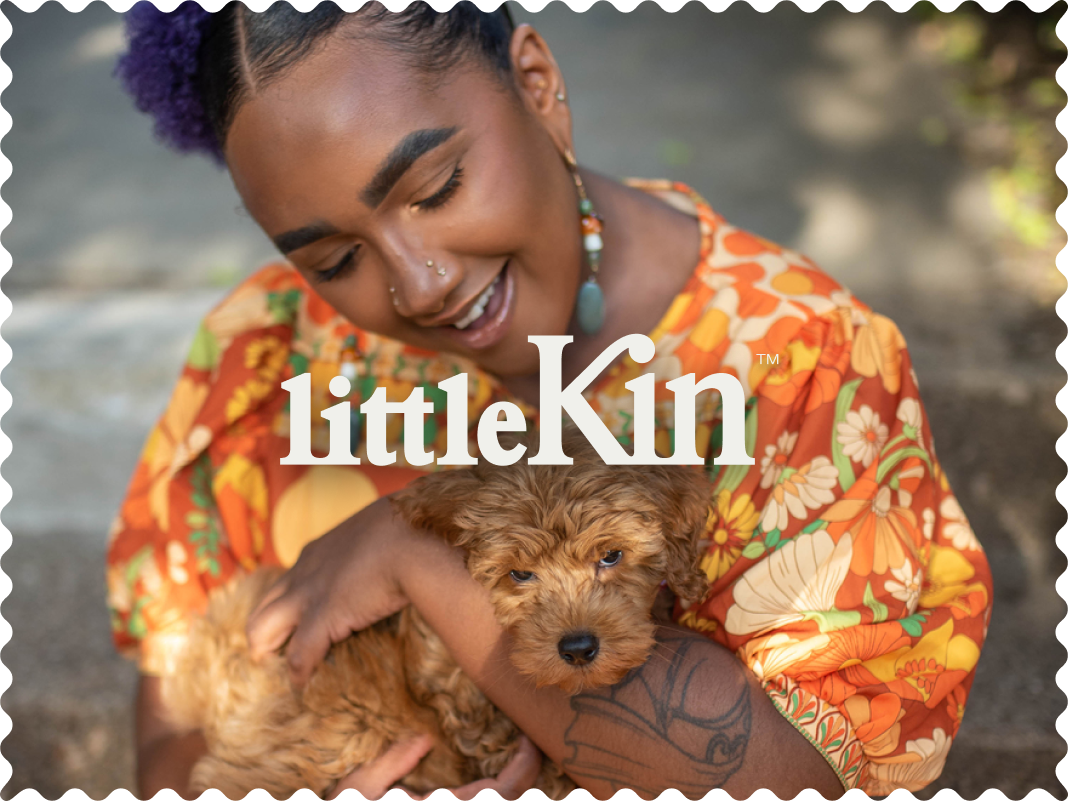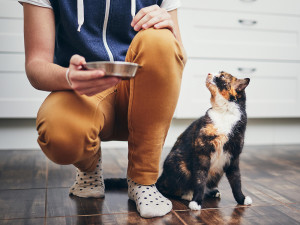Does Pet Insurance Cover Prescription Food Costs?
The short answer? Maybe.
In This Article:
What Is Prescription Food for Pets? Does Pet Insurance Cover Prescription Pet Food? Do Any Insurance Plans Cover Prescription Pet Food? How Does Prescription Pet Food Insurance Work? Other Ways to Save on Prescription Food
If you’ve ever gagged while cleaning vomit or diarrhea off a rug, or inadvertently stepped in a slimy mess in the middle of the night, you’ve surely wondered what your pet ate to make them sick. Sudden digestive issues could mean your pet ate something toxic, but it could also mean their diet needs adjusting. When your vet recommends prescription food, can pet insurance help defray the cost?
Amber Batteiger, a veterinary technician and public relations and communications manager at Embrace Pet Insuranceopens in new tab, says standard pet-insurance plans are designed to help with unexpected costs such as accidents, illnesses, emergency care, and surgeries — but they typically exclude prescription food. Still, some companies — such as Trupanionopens in new tab, MetLife Pet Insuranceopens in new tab, and ASPCA Pet Health Insuranceopens in new tab, as well as optional wellness plans like Wellness Rewards from Embrace — do cover prescription food and supplements when they’re used to treat certain conditions.
How much do you spend on your pet per year?
What is prescription food for pets?
Prescription pet food is a specialized diet recommended by veterinarians to manage health conditions such as kidney disease, diabetes, allergies, or digestive issues. “These diets are carefully formulated to support your pet’s medical needs and can be an essential part of their treatment plan,” Batteiger says.
Prescription food varies from non-prescription regular or premium over-the-counter food. Prescription food is formulated to treat or manage medical conditions and adhere to standards set by regulatory bodies like the U.S. Association of Animal Feed Control Officials (AAFCO).
Just as some pet food brands tailor their formulations to different life stages, others specialize in scaling nutrients like protein, sodium, phosphorus, and fat to support the maintenance and healing of certain medical conditions. Some brands offer reduced protein, phosphorus, and sodium to support kidney function. Other brands have lower fat content for pets with pancreatitis, hydrolyzed or novel proteins for those with food allergies, or more fiber for weight management.
Some vets carry prescription brands. Others are available through a pet pharmacy or retailer that can verify a prescription.
How much does prescription pet food cost?
Prescription pet food tends to be more expensive than regular pet food, ranging from $50 to $140 for a bag of dry food and $1.50 to $5 for a can of wet food. “That can add up quickly over time,” Batteiger says.
Why do vets prescribe this kind of food?
The saying attributed to Hippocrates, “Let food be thy medicine,” could apply to prescription pet food. Vets and veterinary nutritionists recommend prescription food because it’s specifically formulated to help manage or treat medical conditions that can’t be controlled with regular, commercial diets. Prescription food is typically part of a pet’s treatment plan and proven to deliver more nutritional therapy than regular commercial pet food.
Dani Dominguez, a registered dietitian nutritionist, certified pet nutritionist, and founder of the holistic pet nutrition company SunBright Wellnessopens in new tab, says vets are trained to trust the science and marketing behind specially formulated food. “Since many veterinary schools partner with major pet food companies, vet students are often taught to view these prescription diets as the gold standard for managing specific health conditions,” Dominguez says.
Does pet insurance cover prescription pet food?
Some insurance companies apply conditions to coverage through their standard plans. Others offer coverage through wellness plans. Trupanion, for example, covers 50 percent of the cost of prescription food for 60 days, according to Laura Bainbridge, the company’s senior vice president of communications. Trupanion doesn’t exclude brands, no matter how expensive, and it doesn’t cover homemade or raw food diets.
MetLife Pet’s standard accident-and-illness plan covers specialty food and supplements when they’re prescribed by a veterinarian to treat a covered illness or injury. Reimbursement applies only to foods purchased with a valid prescription from a veterinary provider, MetLife Pet Insurance CEO Brian Jorgensen says. “Over-the-counter pet foods or commercial diets — even if recommended by a veterinarian — are not covered unless a prescription is provided for a covered condition,” he says.
Batteiger says the Wellness Rewards plan from Embrace and similar wellness plans from other companies help cover everyday pet care expenses, including prescription diets, annual checkups, vaccines, and flea and tick prevention. “[Wellness plans are] a practical way to manage ongoing costs and ensure your pet gets the care they need without added financial stress,” she says.
Do any insurance plans cover prescription pet food?
Many factors influence coverage for prescription pet food including where you live, what type of policy you have, riders and exclusions, and if the prescription food is treating a covered medical condition. Check your policy for coverage limits. Some policies only cover prescription food for a certain amount of time or up to a certain dollar amount.
Companies that cover prescription food as part of their standard plans include:
Trupanionopens in new tab: The standard plan covers 50 percent of the cost of prescription food for up to 60 days.
MetLife Pet Insuranceopens in new tab: Covers specialty food and prescription diets if they’re medically necessary and prescribed by a vet.
ASPCA Pet Insuranceopens in new tab: The Complete Coverage plan includes prescription food and supplements when used to treat a covered condition. ASPCA specifies that the diet must be part of treatment, not for general maintenance.
Spot Pet Insuranceopens in new tab: The base plan covers prescription pet food when it’s prescribed by a licensed vet for a covered condition.
Nationwide Pet Insuranceopens in new tab: Certain plans and optional riders cover prescription food.
Care Plus by Chewyopens in new tab: Promises full coverage for food prescribed by a licensed veterinarian, as well as prescription medications and supplements.
How does prescription pet food insurance work?
MetLife policyholders are reimbursed for eligible prescription-food expenses after submitting a claim, Jorgenson explains. Reimbursement depends on MetLife’s customizable deductibles, annual benefit limits, and reimbursement percentages.
Trupanion pays veterinarians almost instantly through its VetDirect Pay system. “This way, members never see a bill and don’t have to wait to be reimbursed,” Bainbridge says. “If a member chooses to pay for the prescription food themselves, we will then reimburse them via check or direct deposit. It’s our goal to make things as simple and easy as possible.”
Other ways to save on prescription food
If your pet insurance doesn’t cover prescription food, there are still ways to save. Batteiger suggests buying prescription food in bulk and taking advantage of autoship discounts for recurring orders. “Manufacturers sometimes provide coupons or rebates, so it’s worth checking their websites or asking your vet,” she says. She also recommends comparing prices online, and with your vet, considering generic or alternative therapeutic diets. Pet care assistance programs such as RedRover Relief or The Pet Fund offer grants.
Rather than prescription food, Dominguez often recommends whole-food diets because they allow pet parents to ensure each meal is nutritionally balanced for their pet’s medical needs. That might mean cooking salmon and sweet potatoes for your dog, which could be less expensive than prescription food. Look for kibble, freeze-dried, or dehydrated food that uses real animal proteins, healthy fats, and whole vegetables and fruits (with natural vitamins, minerals, and antioxidants). Avoid fillers such as corn and soy, which have little nutritional value. “If a pet parent opts for a high-quality kibble or canned food, they can enhance its nutritional value by adding some fresh food toppers or targeted supplements to address specific health needs,” Dominguez says.
Bottom line
When prescribed by a vet for a diagnosed medical condition, prescription pet food can be a lifesaver. But it is more expensive than over-the-counter commercial food, so it’s not always feasible for long-term treatment if your pet insurance plan doesn’t cover prescription diets.
If it does (lucky you), be aware of your plan’s restrictions. Some standard plans that cover prescription food may limit coverage.
Dominguez advises pet parents to read food labels carefully. “While these prescription diets claim to include ingredients or nutrients tailored to medical needs, in reality, many are not significantly different from standard pet foods — aside from a minor formulation tweak or an added supplement,” she says.









